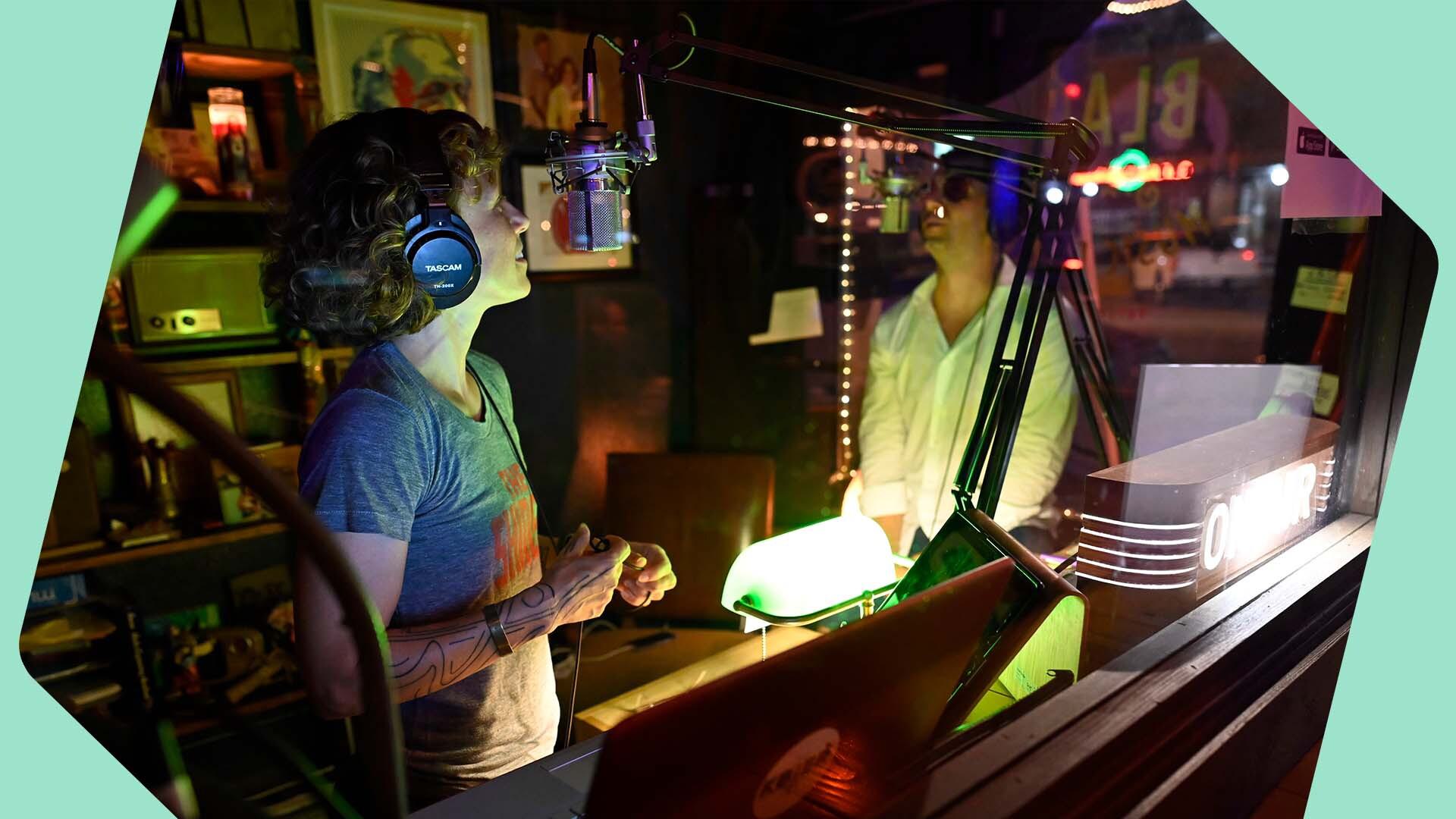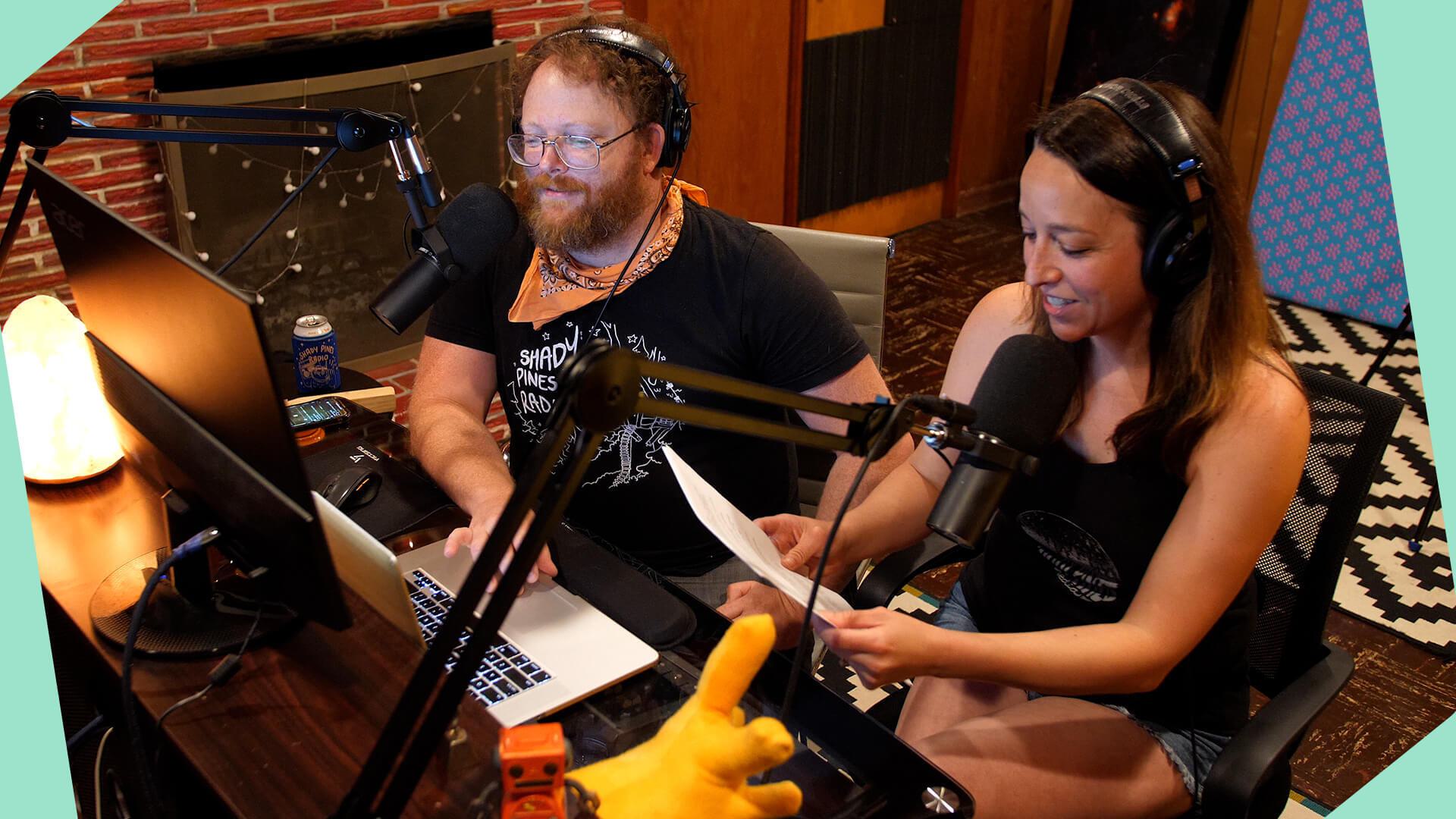Need advice? Let's talk.
Get straightforward guidance from your broadcasting partner. Schedule a call to chat with the team about your radio station.
Book DemoCommunity Radio Explained: A Guide to Local Broadcasting
Once written off as a dying trade, community radio is back and taking on big commercial stations by catering locally, but broadcasting globally.

Radio has always been for communities. Whether large or small, the platform acts as a megaphone to connect one to many. And since COVID, local community radio has only grown from strength to strength. Get the lowdown on how local broadcasting works, and what you can do to get involved.
What is Community Radio?
At its core, community radio is local broadcasting. So if you’ve got a radio on hand, you’ll be able to tune into stations you can’t access anywhere else.
"People have come all over the world to visit because they’ve heard us online" - Soho Radio.
The ethos is to involve, engage, and support the community. That could mean anything from local news stories, addressing local issues, or even educating the public to make them better equipped. Something we’ve seen a lot of recently with the response to COVID.
But addressing local issues is a big part of what makes community radio great. A recent TED talk covered this in detail on the role community radio played in educating farmers on conservation farming. Resulting in better agriculture for the area.

So in a sense, community radio is the soul of the community. Expressing values and aspirations, whilst tackling unique problems at a local level.
How Broadcasting Works
When it comes to broadcasting, there’s either terrestrial radio (like AM, FM, and DAB) or online.
Terrestrial Radio
For terrestrial radio, there are usually a few hoops to jump through to get on air.
And there are things you can’t do and must do. Like, apply for licensing, don’t give profits to shareholders, and a few other rules set out by Ofcom.
Here in the UK, Ofcom registered community stations have to follow very strict guidelines. These are called ‘Key Commitments’. They include restrictions on speech time, content type, and the area they serve. All of which serve a purpose. And that’s to provide a service for listeners, like local news, whilst being able to fund the station without creeping into commercial radio territory.
Speaking of which, the biggest revenue source is grants, donations, and local advertising. Most are funnelled back into the station for operational costs, content creation, expansion, and even giving back to charities.
Each country has different rules and guidelines for terrestrial broadcasting. So best to contact your local authority and go from there.
Online Radio
But online radio is completely different.
In the past, community radio meant covering a small geographical area. Usually within a 5 to 10 mile radius. But in recent years, terrestrial radio stations are reaching a wider audience by going online.
So it works by feeding your audio out over the internet. Whether that’s live, automated, or a mix of both. And anyone with access can tune in, like through a mobile app, smart speaker, or even third-party directories.
Even terrestrial stations that have been on the air for years are relaying shows online. And sometimes vice versa, often using devices like a Barix Instreamer.
But from a broadcaster’s perspective, that doesn’t mean sacrificing your voice or values. So although global, shows are catered locally.
Like if you’re away and homesick, you can stay connected and engaged with the community. Or package up your shows and deliver them to an audience that wouldn’t have access otherwise.
Business Fronted
At least, that’s the idea behind stations like Black Sparrow Radio and Boogaloo Radio. Both of which are fronted by businesses, like coffee shops, bars, or music venues.
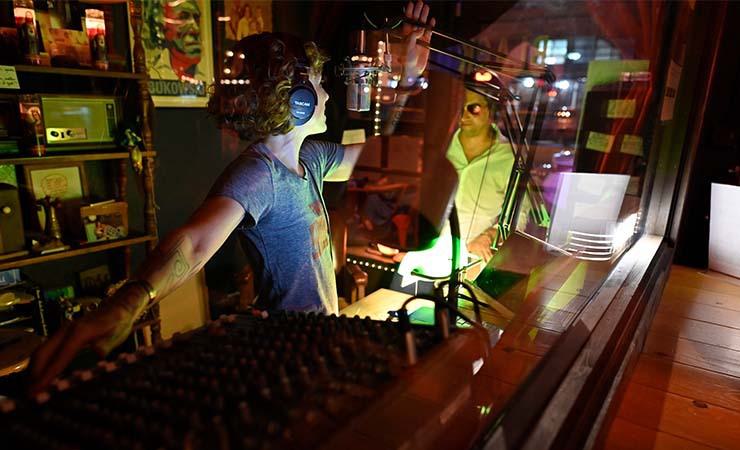
So having a front door creates a strong relationship within the community. A place they can drop by for a chat. Not to mention, building a business that can sustain itself and support the station is a huge bonus.
And Soho Radio mentioned the impact of drawing in a wider audience, stating that “People have come all over the world to visit because they’ve heard us online”.
100% Local
What makes community radio great is the people.
More often than not, everything is 100% locally sourced. From the presenters to content, the talent is represented by the people, for the people. That’s the idea behind Hermitage FM. A community station running a local coffee shop.

They’re not scared of showing their true colours either. Whether that’s broad accents or insider stories, they’re proud of where they’re from. Once you lose that, you just become another generic station from the likes of Bauer or Global.
Who incidentally bought loads of stations here in the UK. Converting them from unique local radio with a passionate voice, into generic bland radio playing the same old hits from the likes of Little Mix and Ed Sheeran.
And I don’t know about you, but there's only so much Ed Sheeran in a day I can take.
Slow Beginnings
With anything new, things take time. Especially when it comes to starting a community-driven radio station.
Although ‘community’ is in the name, you’ll often find these types of stations run by a handful of people, usually doing all the heavy lifting, and usually for free! So there’s no producers or assistants to pick up the slack. At least, not to begin with.
But as time goes on and support builds, running a community station gets easier. Volunteers start to make up the ranks by producing shows and helping run the day to day operations.
Stations like Foundation FM have been running for a while now, attracting countless DJs getting involved hands on, and producing shows on a volunteer basis.
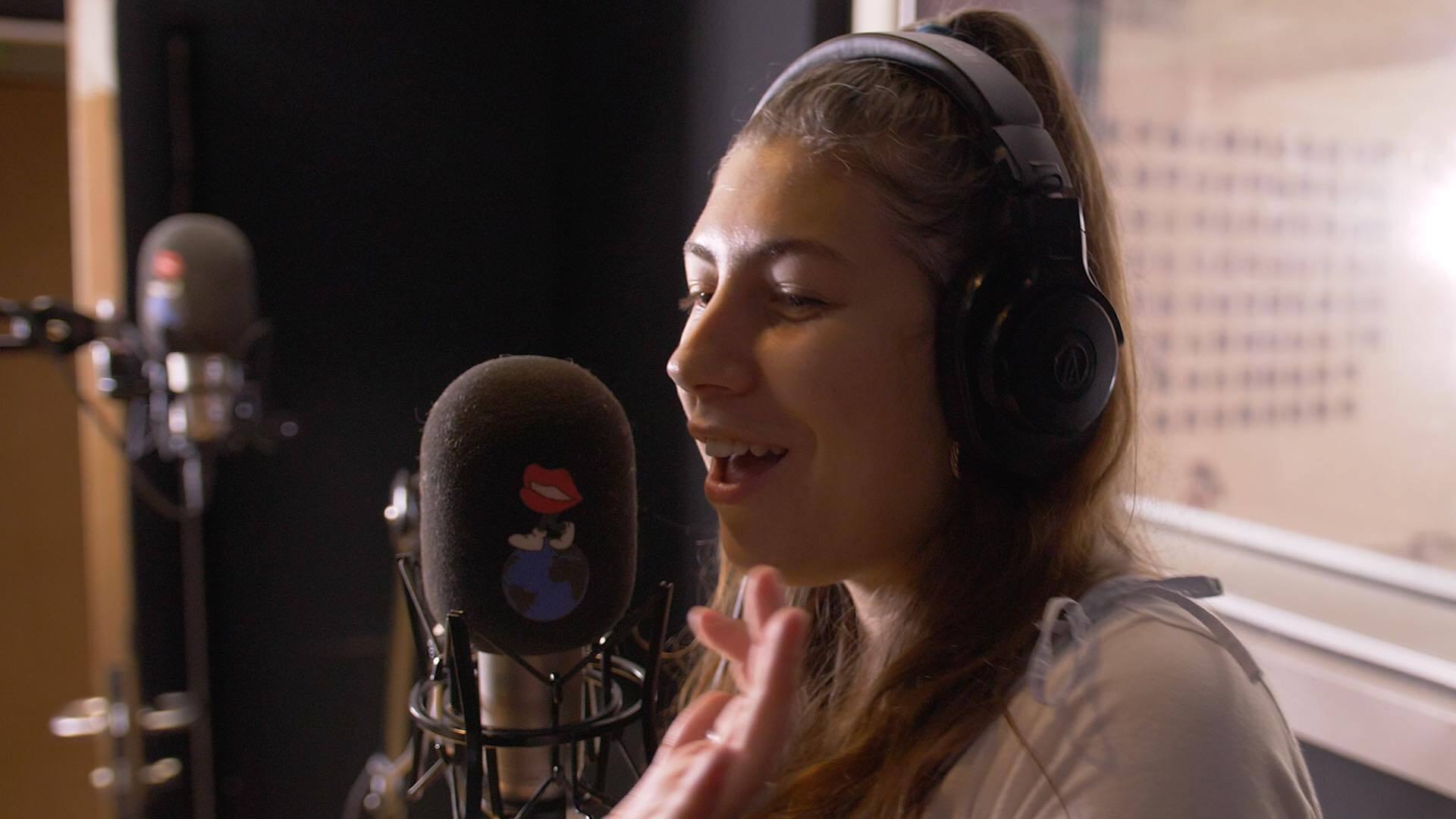
But if things aren’t moving quick enough, then you can ask for help. Chesil Radio reaches out within their community to get people in the mix. So there’s no shame in asking for a hand every once in a while.
Volunteer Driven
As you’ve probably guessed at this point, community radio isn’t a big moneymaker.
A majority of stations are volunteer-driven. Those willing to put time and effort into making the station a place for the local community. Sometimes that’s running a dedicated show, to engineering, or even running an event or business front.

And that’s not a bad thing. Inviting those to join from the area helps build and develop local talent. That’s one of the driving forces behind stations like Diversity Radio, a London based station raising awareness on the impact of mental health on local communities.
No Egos Allowed
Radio, especially those behind the mic, attracts big personalities.
People like Howard Stern, Larry King, and Chris Evans. Larger than life people that can’t wait to tell you what they think. But that sometimes lands presenters in hot water.
But community radio isn’t a place for egos, so leave it at the door. Take Johnstone Sound. The Scotland based station shines a spotlight on the community, events, and presenters in equal measure.
"We’re hoping to hear from some retired or semi-retired folk who maybe have a few hours to spare every week or fortnight." - Johnstone Sound.

So it’s more collaborative and creative, rather than being a one-man-band broadcasting their own playlist. Something anyone can do on Spotify these days.
Day-to-Day Production
Radio stations' day-to-day differs from one another, but all rely on the same thing: delivering local content to local people.
A day in the life could consist of:
- Breakfast: Warming listeners up with highlights about the local top stories.
- What's On: Telling listeners about local events and noteworthy points of interest.
- Local News: Forget national news, this is local news important to local people.
- Drivetime: Listeners don't care about traffic 100 miles away, but rather 100 yards away.
Whilst community radio is run with the help of volunteers, it's not easy. But that's what makes community radio better. The fact that all these people are putting effort and time into local content, for free, providing a service people within the community can be proud of.
Future of Community Radio
In the last few years, community radio has grown and proven its importance more than ever.
People needed a voice, a local voice, they could turn to. Especially when countries were in lockdown and needed to know what was going on in their local area.
We now have platforms and systems that make radio easier and more innovative than ever before. Radio.co removes the barrier of entry. Anyone that wants to set up a station, can set up a station.
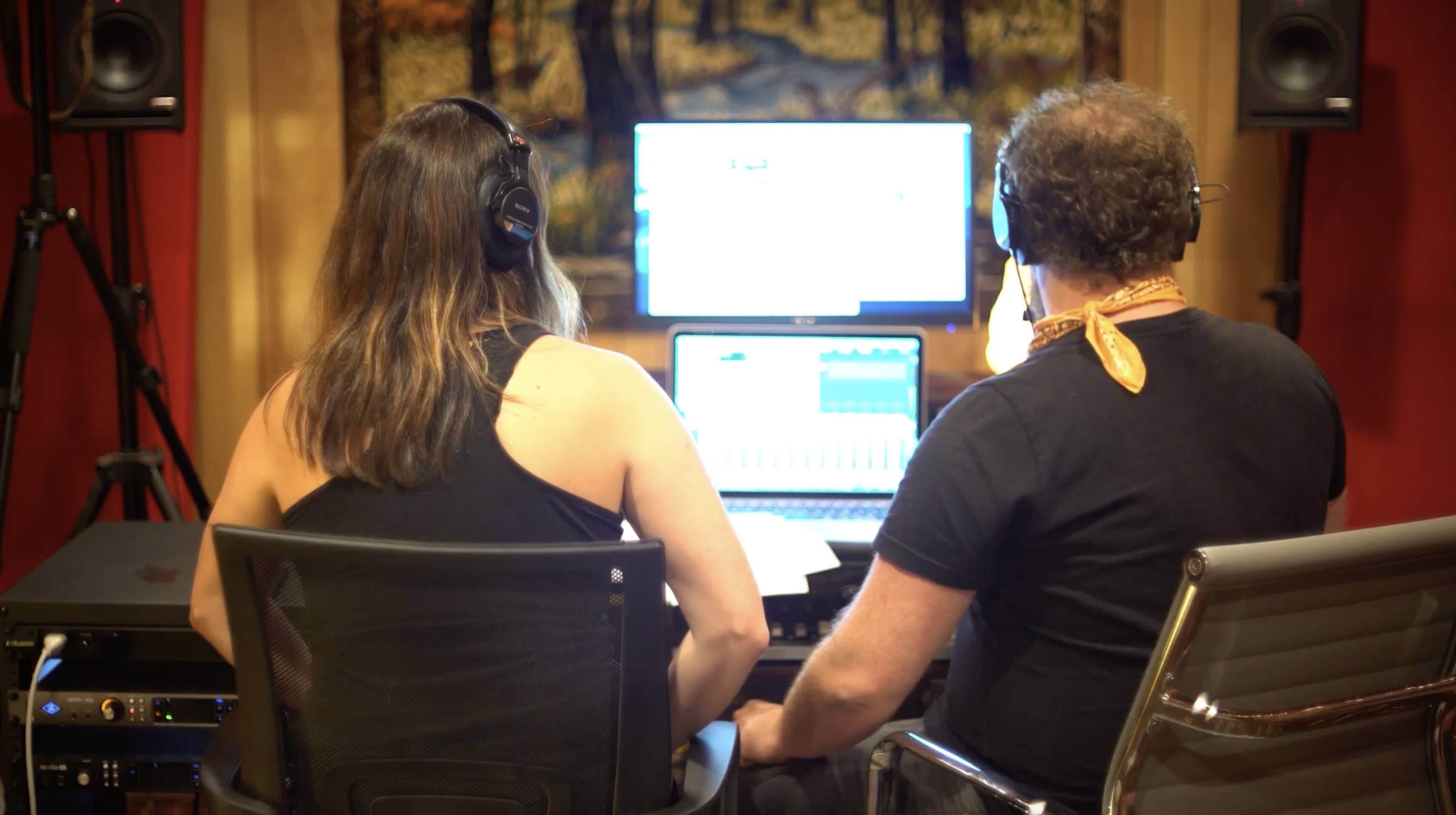
However, we will need to be careful and not just create stations for the sake of creating stations. Pick a niche subject for your local community and build on that. Build a team and develop from the bottom, and suddenly you'll end up with an amazing product.
Conclusion
Community radio is at an exciting point. We all have a chance to grow and expand, catering to local areas. How we do that is up to you.

